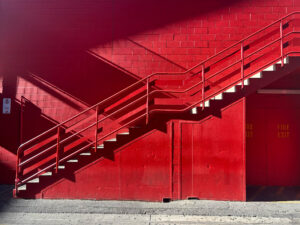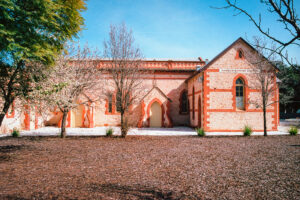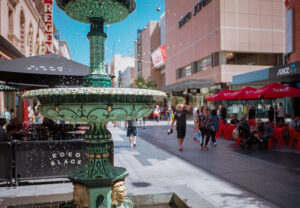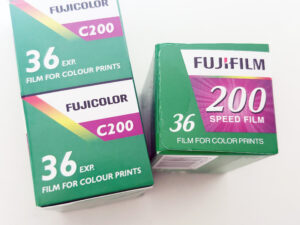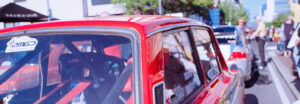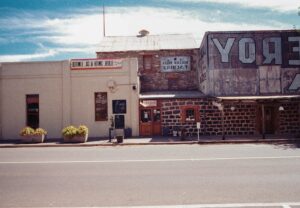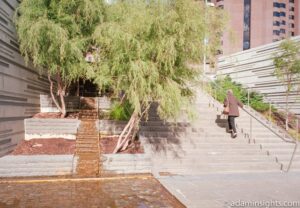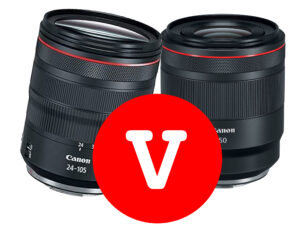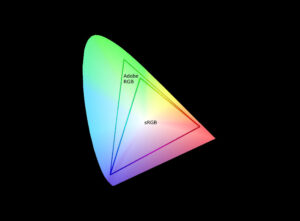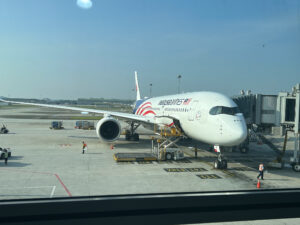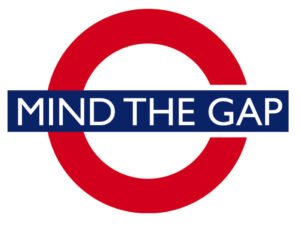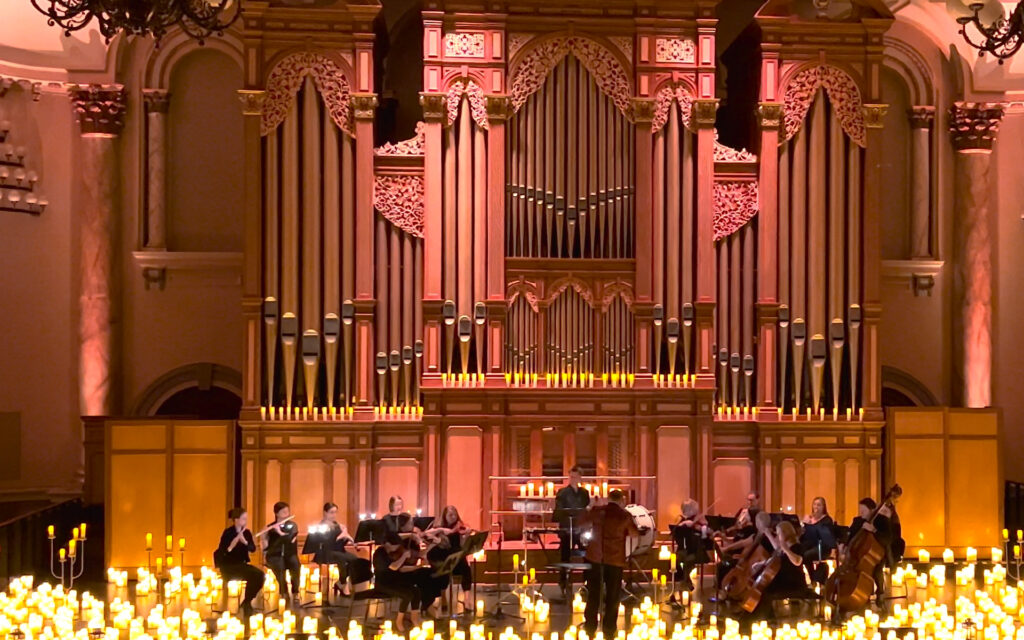I’ve just really enjoyed listening to the best of Joe Hisasishi at the Fever Candlelight Orchestra at the Adelaide Town Hall. Featuring the Adelaide Concert Orchestra and conducted by Adelaide’s own Graeme Press. Visually it was special: Candlelight concerts bring the magic of a live, multi-sensory musical experience to awe-inspiring locations never before used for this purpose in Adelaide.
The concert was well worth the night out: fantastic talent by the musicians, and overall a really entertaining. The music by Joe Hisaishi is timeless and just pleasant to listen to. You’d be hard pressed to find someone who couldn’t enjoy it.
The Auditorium at the Adelaide Town Hall was a great space for this. Really set the atmosphere.
Miyazaki film Howl’s Moving Castle was released on November 20, 2004 in Japan. Its main theme, Merry-Go-Round, became Hisaishi’s most commercially successful movie score, with over 41 million Spotify streams as of November 2022.
For the hour, I was enveloped by the spellbinding, dreamy and fantastical atmosphere of the beautiful melodies. It was easy to be Spirited Away by the sounds of Amicus String Quartet performing the Best of Joe Hisaishi and Studio Ghibli films.
The programme included
- Nausicaa Valley of the Wind
- Departures
- Laputa Castle in the Sky
- Kiki’s Delivery Service
- Kikujiro
- Howl’s Moving Castle (see the video)
- Totoro
- Princess Mononoke
- Ponyo
- Spirited Away
Joe Hisaishi
Mamoru Fujisawa, professionally know as Joe Hisaishi is a Japanese composer and musical director known for over 100 film scores. He has been associated with animator Hayao Miyazaki since 1984, having written scores for all but one of Miyazaki’s films. He started learning violin at the Violin School Suzuki Shinichi at the age of four, and began watching hundreds of movies each year so I guess his career choice was somewhat natural.
In 1974 Hisaishi wrote music for the anime series Gyatoruzu, and composed some of his other early works, under his given name. He also composed for Sasuga no Sarutobi (Academy of Ninja) and Futari Daka (A Full Throttle).
As he became better-known, Hisaishi formulated an alias inspired by American musician and composer Quincy Jones: “Quincy”, pronounced “Kuinshī” in Japanese, can be written using the same kanji in “Hisaishi”; and “Joe” came from “Jones”
In the 1970s, Hisaishi’s compositions were influenced by Japanese popular music, electronic music and New Age music, and by the Japanese electronic band Yellow Magic Orchestra. He developed his music from minimalist ideas and expanded toward orchestral work. Around 1975, he presented his first public performance. His first album, MKWAJU, was released in 1981; his second, the electropop-minimalist Information, was released a year later. His first major anime scores were for Hajime Ningen Gyatoruz (1974) and Robokko Beeton (1976).
In 1983, Hisaishi was recommended by Tokuma, who had published Information, to create an image album for Hayao Miyazaki’s animated film Nausicaä of the Valley of the Wind. It was the first of many of Miyazaki’s films Hisaishi would score. In 2008, he’d compose soundtracks for the Academy Award-winning film Departures which we heard from at the concert.
In 2010, Joe Hisaishi became an invited professor at the Japanese National College of Music.

